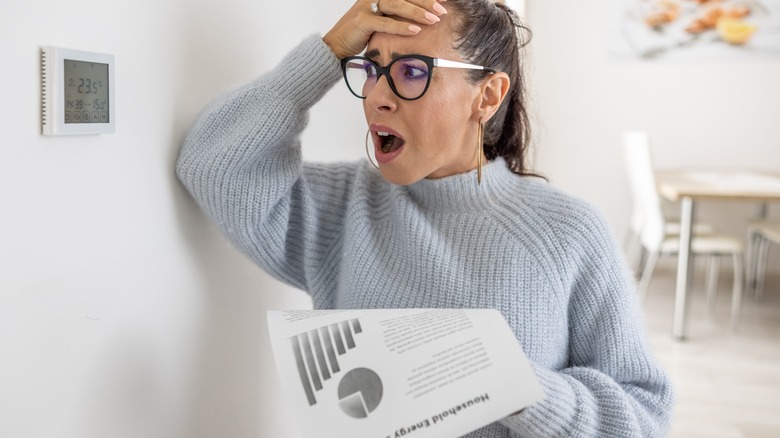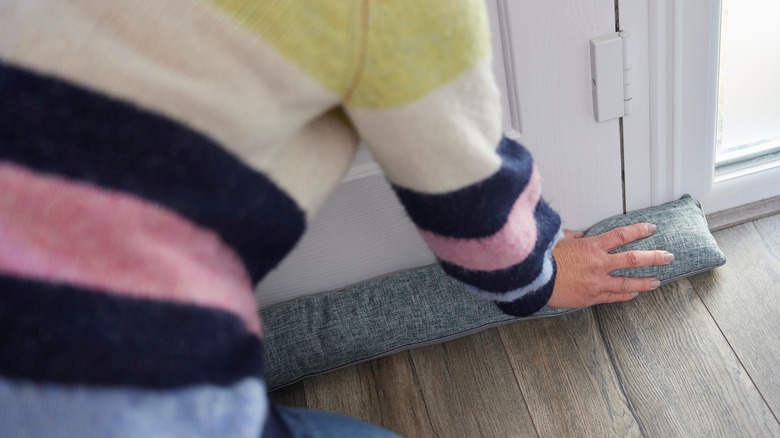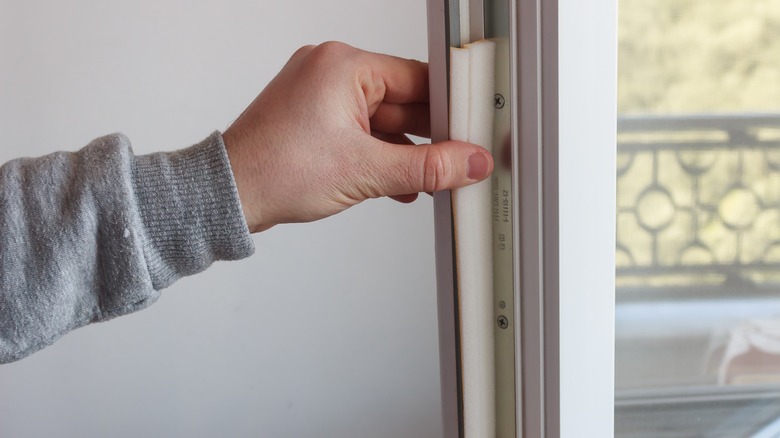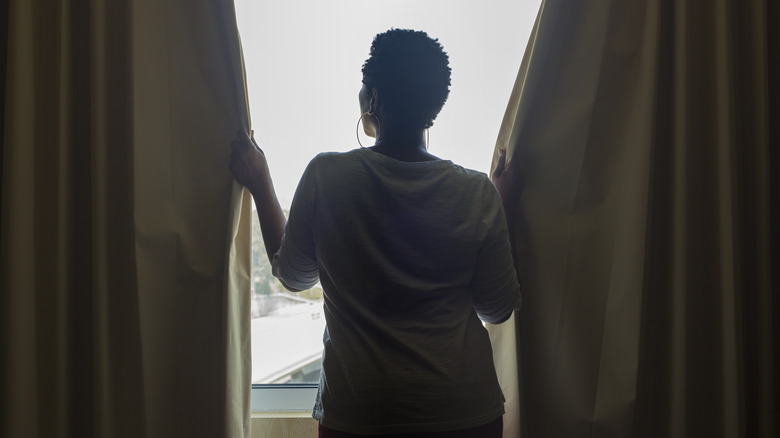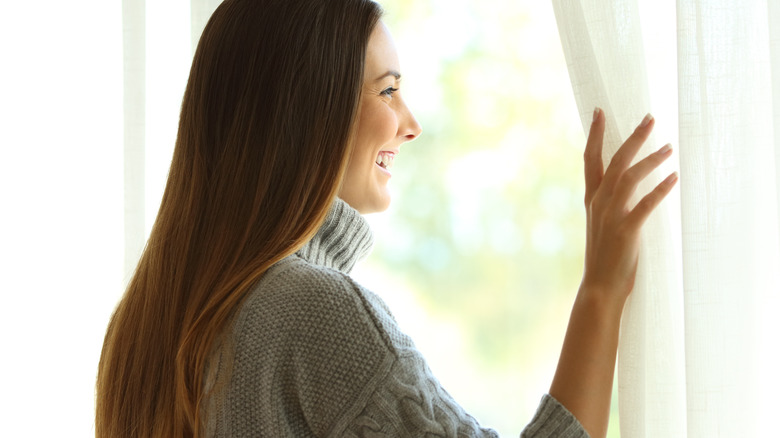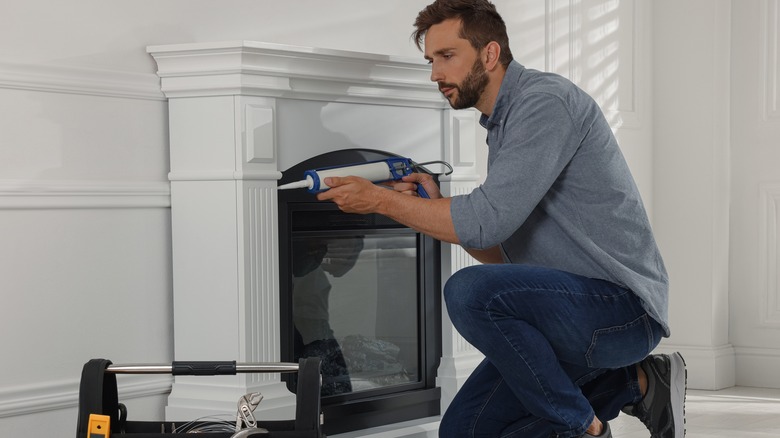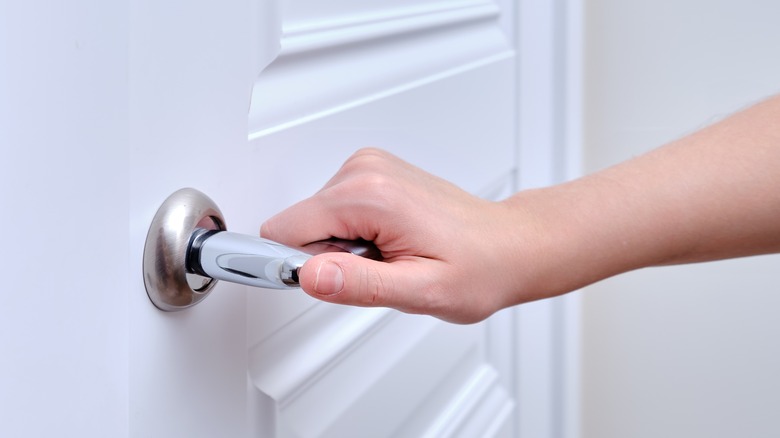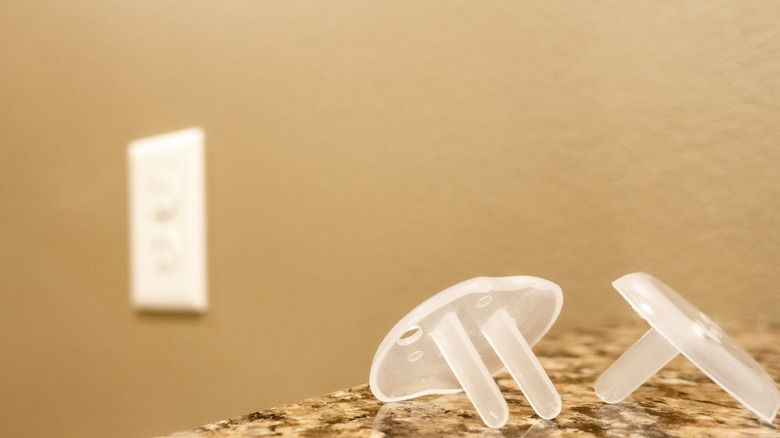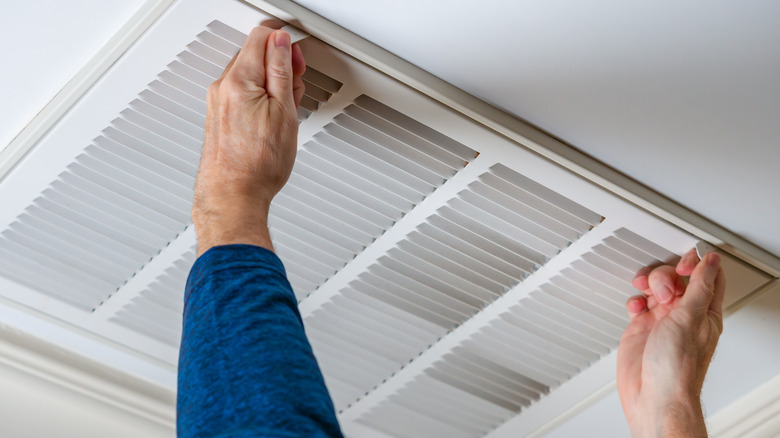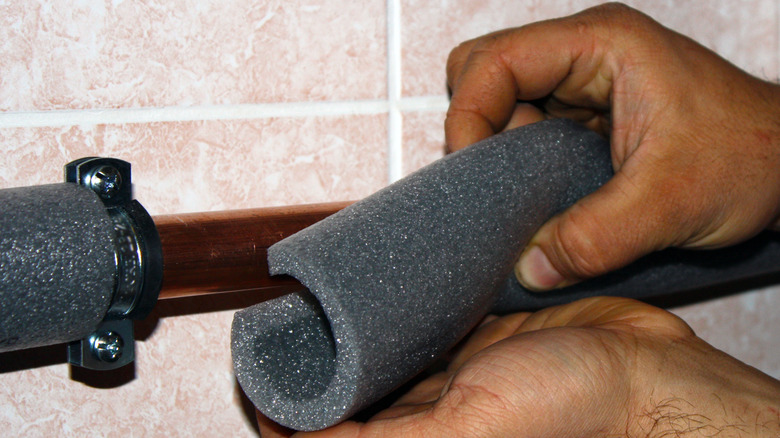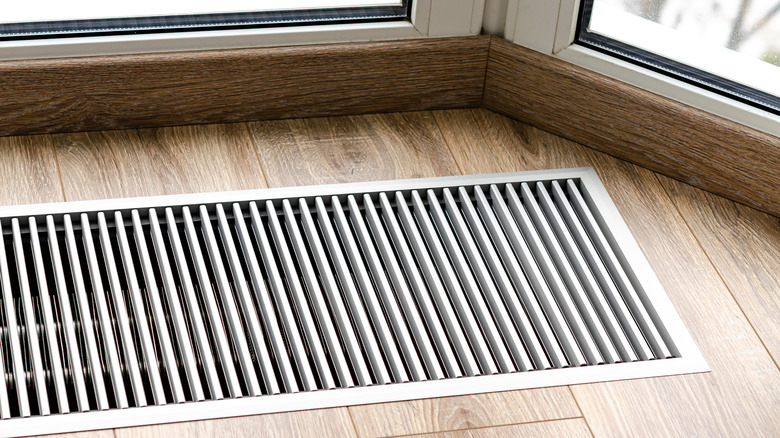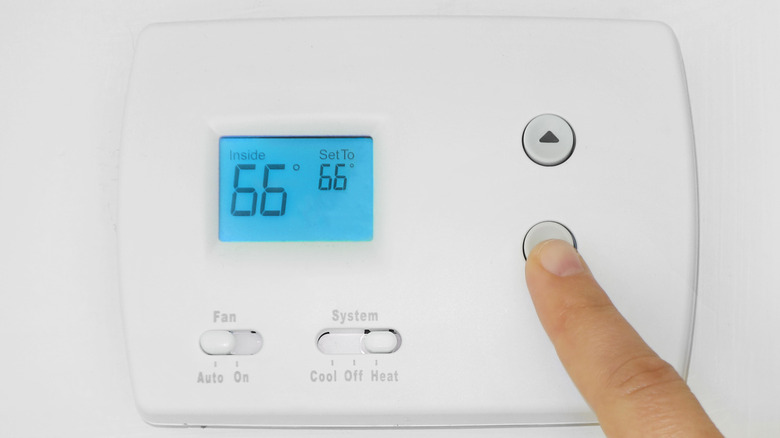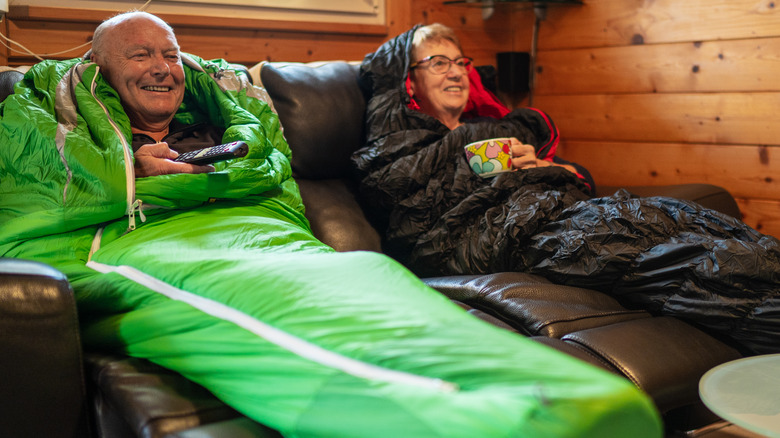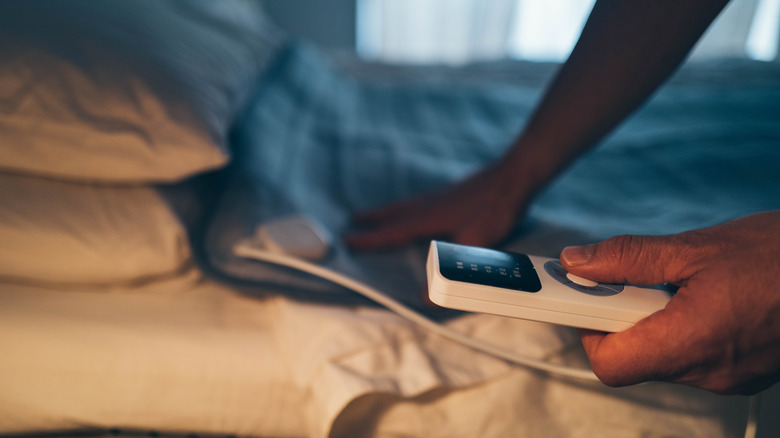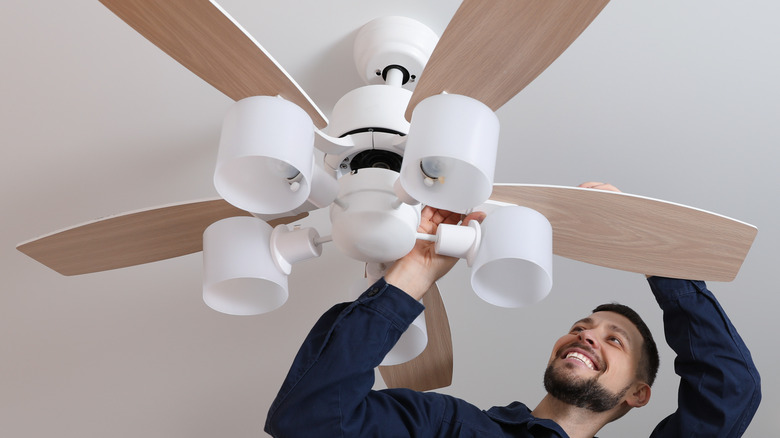Simple Tricks To Lower Your Utility Bills In The Winter
No matter how you heat your home, keeping your living space warm during the winter can be expensive. The combination of electricity, gas, and water bills in the winter months can take a bite out of your cold season budget, especially when the temperature drops so low outside that your heating system has to work extra hard to keep your home comfortable. Fortunately, there are quite a few relatively simple (and painless) tips and tricks you can use to help keep your cold-season utility bills as low as possible.
Begin by considering the various factors and habits that are keeping your winter utilities higher than you'd prefer and start making changes that can have a real impact. The ideas listed below are easy to implement and don't require a significant financial investment. Choose the strategies that make the most sense in your situation. Pair these suggestions with some year-round tips and tricks to save money on your electric bill and you'll be on your way to minimizing your winter utility expenses.
Put a draft stopper in front of each door
Exterior doors are notorious for letting cold air leak indoors from the outside, so they're a good place to start when you start looking for simple ways to reduce your wintertime utility bills. After all, every bit of wintry air that comes in from outside will cause your heating system to work harder than otherwise required to regulate the temperature. Preventing cold air from creeping in from the bottom of the door can be as simple as positioning a draft stopper in front of the door. You can purchase a pre-made draft blocker or — if you're feeling crafty — hack a DIY draft stopper to help keep your home warm using a pool noodle, an old pillowcase, and a few safety pins. You could also roll up a towel to place in front of each door. The key to using a draft blocker effectively is to ensure that the gap between the bottom of the door and the floor is completely covered.
Seal leaky windows and doors
Of course, the bottom of exterior doors isn't the only way cold air gets indoors from outside. The sides and tops of doors can also let cold air in, as can the edges of windows. That's why it's very important to make sure that all of the doors and windows in your home are properly sealed.
If you can feel any air at all coming in around a door or window, that's a sure sign that your windows need to be sealed to help boost the energy efficiency of your home. Otherwise, the indoor air that you're paying to heat can leak out while the cold air outside finds its way in. You can also use this simple candle trick to check your doors and windows for leaks. Once you know where the leaks are, you can use caulk or weatherstripping to seal them up. Even if you know that there's weatherstripping in place around your doors and/or windows, it's important to check it every year to determine if it might need to be replaced.
Hang thermal or insulated window coverings
Making sure your windows are properly sealed is important, but it's not the only window-related way to save money on your energy bills. Window coverings are also an important consideration when you're looking for ways to reduce your cold-weather utility bills. The type of window covering you have in place can play a big role in how much it costs to regulate the temperature in your home, especially on frigid, dreary days when there's no sunlight and during the overnight hours.
When your goal is to minimize your utility bills, thermal curtains are a great window treatment option to consider. Insulated cellular shades, commonly referred to as honeycomb shades, are also a great choice. These window treatments are specially designed to form a thermal boundary between the inside of your home and what's on the outside of the window. They do a great job helping to keep cold air outside during the winter (as well as to keep warm air outside during the summer).
Let the sun in during the day
One of the great things about window treatments like curtains and blinds is that you get to decide when to keep them closed and when to open them up. On sunny days, even when it's cold outside, it can be a good idea to pull back the curtains or raise the shades to let the sunlight shine in through your windows and provide natural warmth to your home.
Letting in the sunshine through closed and properly sealed windows may help your heating system maintain the temperature in your home throughout the day without having to run as frequently or for as long. The U.S. Department of Energy indicates that opening windows on sunny days is especially beneficial with windows that get direct sunlight. When the sunlight starts to fade, though, it's best to close your window treatments, especially if you have thermal or insulated coverings installed.
Prevent fireplace drafts
Exterior doors and windows aren't the only ways cold air can creep into your house from the outside. Fireplaces are primarily thought of as a source of warmth, but they can contribute to heat loss by letting cold air inside. Sure, a fire can feel toasty warm if you're sitting right in front of it, but that doesn't mean that cold air isn't creeping in around the edges or down the flue.
If you have a fireplace, it's important to make sure that it's properly sealed. Caulking the edges can be a good first step. It's also important to keep your fireplace closed when you're not using it, including the doors, the damper, and the chimney flue. Of course, you'll need to open it up before you light a fire. If have a fireplace that you never use, you may want to consider permanently blocking it off or sealing it so that it becomes a purely decorative feature.
Keep unused rooms closed up
Just like a fireplace should be closed up when it's not being used, the same is true for the rooms in your home. There is no reason to spend money heating unused spaces. If you have a guest room that no one uses unless you have overnight guests, consider closing the HVAC vents in that room and keeping the door closed so that you're not actively heating a space that isn't being used regularly. You could even put a draft blocker in front of the door to minimize the amount of climate-controlled air that gets in under the door.
The same is true for other spaces that are rarely used, such as a dining room that's only used on special occasions or a media room that's empty except for movie night or game day. Just be mindful of opening the vents and doors to warm things up well in advance of the next time you'll need to use the space, then closing the vents and doors when you're done.
Block unused electrical outlets with childproof plugs
Even small air leaks can let in cold air and drive up your utility bills. Once you've taken care of sealing up your doors, windows, and fireplaces, which are among the largest areas that allow cold to creep into your home from the outdoors, the next logical step in your quest to reduce your power bill is to turn your attention to finding smaller potential leaks to seal, such as power outlets. After all, every bit counts when you're trying to minimize your utility bills.
Electrical plugs may have tiny openings, but chances are that there are a lot of them in your home — some of which are probably just sitting there empty, letting chilly air filter in a little at a time. Fortunately, it's very easy to fill these holes safely and affordably with childproof plug covers. What a simple solution to not only keep kiddos who live in or visit your home safe but to also keep cold air from filtering in through unused plugs.
Clean/replace the heater filter
Whether you use electricity or gas to heat your home, proper filter maintenance is very important. Air filters can get dirty and clogged up very quickly, even if you keep your home quite clean. After all, an air filter's job is to filter the air, so it is constantly capturing things like dust, pollen, pet hair, lint, etc. The dirtier an air filter is, the harder the heating system will have to work to warm the air and maintain the desired temperature. The harder your heater has to work, the more energy it requires to operate. And, the more energy it uses, the higher your utility bills will be.
That's why it's so important to be diligent when it comes to air filter maintenance. You should check your air filter every month, and it will probably need to be cleaned every time you check it — at least until you replace it. Air filters should generally be replaced every three months, at a minimum.
Properly insulate your water pipes
Hot water is important all year long, especially in the winter. Taking the time to properly insulate your water pipes can help you keep the hot water flowing in your home during the winter. Having well-insulated water pipes can help keep hot water at an appropriate temperature as it flows from your water heater to your shower, sink, dishwasher, or washing machine, which makes it possible for those fixtures and appliances to function as efficiently as possible during the winter.
That's important enough on its own but isn't the only benefit of properly insulated water pipes. Insulation also plays an important role in helping to keep your water pipes from freezing when the temperature dips to a frigid level, which is important both to keep you supplied with hot water and to help prevent your water pipes from bursting, which can help you avoid an extremely expensive water bill and costly plumbing repairs. For a quick DIY hack, learn how to use pool noodles as pipe insulators.
Make sure nothing is blocking heater vents
Avoiding placing furniture or rugs where they partially or fully block any heater vents is an easy way to minimize your heating-related utility bills. It's very important to make sure that the area around, on, and over your heater vents stays unblocked at all times. If your heater vents are blocked, the unit won't be able to operate as efficiently as possible. Air won't circulate efficiently when the vents are blocked, which can make it difficult for the unit to reach or maintain the desired temperature.
Additionally, when air is flowing through a heating system and any vents are blocked, pressure can build up inside the ductwork. As a result, the ducts can start to leak or even crack completely. Not only will this further reduce efficiency and contribute to a higher power and/or gas bill, but it will also lead to additional expenses in the form of ductwork repair or replacement.
Adjust your thermostat based on when you're home
If you keep your thermostat set to the same temperature all the time, even when no one is at home or everyone is asleep, chances are that you're paying more to heat your home than you really should. One of the best ways to reduce wintertime utility bills is to keep your home at its warmest when people are up and around, but to let it drop by at least a few degrees when no one is home or when everyone is snug under the covers during the overnight hours. That way, the heater isn't running as much when no one is benefitting from the energy expenditure.
If you have a programmable thermostat, it's easy to set your heater to adjust up and down automatically based on your ordinary schedule. However, if you don't have one, you don't have to go to the expense of getting one installed to save money in this manner. Simply make it a house rule that the last person to leave or go to sleep is responsible for turning the thermostat down and tasking the first one to return or wake up with turning it up.
Bundle up in cozy layers
You can save even more money on your utility bills if you can find a way to stay comfortable without turning the thermostat up too high when you are at home. The U.S. Department of Energy recommends keeping the temperature set between 68 and 70 degrees Fahrenheit during waking hours. To some people, this is comfortable or even a bit warm, while others would prefer to set the temperature a good bit higher for maximum comfort. Regardless of your temperature preference, the fact remains that the warmer you set your thermostat (and the longer you keep it there), the more electricity and/or gas it's going to take to heat your home.
If you — and those with whom you share your living space — can agree to bundle up indoors a bit, you just might be able to set your thermostat at a lower level to help achieve the goal of lowering your utility bills. Consider a compromise, such as keeping the house at a warmer level through the evening meal, then turning it down a bit for evening TV viewing and leaving it low overnight. Keep blankets and warm outerwear in the TV room so it's easy for everyone to bundle up to stay comfy.
Catch your Zs (or watch TV) in a thermal sleeping bag
Thermal sleeping bags do a great job keeping people who camp in the winter warm without access to any form of climate control, so just imagine how helpful they'll be when you're trying to get used to chilling out at home, with the thermostat turned down a bit cooler than you're accustomed. Whether you're hanging out on the sofa on a cold winter day or are settling down to sleep for the night, you can stay cozy and warm by snuggling up inside a sleeping bag designed for cold weather use.
If you already have a thermal sleeping bag in your camping gear, put it to use indoors instead of packing it away until your next outdoor adventure. Sleeping bags shouldn't be stored in the garage. By bringing your sleeping bag inside to help keep you warm, you'll be extending its useful life by keeping it in a cool, dry location. Not only can using it indoors help you reduce your utility bills, but it can also help extend the life of your sleeping bag. If you don't already have a thermal sleeping bag, it can be worthwhile to invest in one to use this way, even if camping is not your thing.
Sleep under an electric blanket
A thermal sleeping bag isn't the only solution to staying extra warm at home without having to turn up the thermostat. Sleeping (or snuggling) under an electric blanket can be a cozy way to stay warm at night without having to keep the thermostat set at a high temperature.
Sure, electric blankets do require electricity to operate, but you'll be able to keep the overall temperature in your house lower when you sleep under one. After all, you'll be so toasty and warm under the blanket while you are sleeping that you probably won't even notice if the air temperature is a bit colder than you prefer. Plus, using an electric blanket doesn't cost nearly as much to operate as a central heating system or even an electric space heater. According to the University of Utah, electric blankets use 90% less electricity than a space heater.
Add rugs to rooms with hard flooring
If your home has tile, wood, or concrete floors, keeping your feet warm during the winter can be more challenging than if you have wall-to-wall carpet installed. Sealing up drafty doors can help reduce the chill of hard floors, but they're never going to be as warm as floors that are covered with carpet. Fortunately, area rugs can be a great way to warm up hard floors and make any room more cozy.
Not only are they a beautiful interior design element, but strategically placed rugs can provide a great way to warm up the hard floors in your home. For maximum warming benefit, place a cushy rug pad beneath any area rug you decide to use. The pad will add an extra insulating layer between your feet and the chilly hard floor while also helping to keep the rug securely in place.
Run ceiling fans backward
Ceiling fans are a popular and cost-effective way to help stay cool during the summer, but that's not where their seasonal benefits end. With one simple adjustment, a ceiling fan can also help you stay warm during the winter with minimal expense. Sure, that seems counterintuitive — maybe even a bit backward. Interestingly enough, the key to using a ceiling fan to help keep your winter heating costs to a minimum is to set the fan to operate backward.
Ceiling fans ordinarily rotate counterclockwise, but most come with a switch that can be flipped to make the motor rotate in the other direction. If you make that change when the temperatures start to dip and then get in the habit of operating your ceiling fan on low — with the blades running clockwise — it'll be like you're tricking the room into feeling warmer than the actual temperature. Running a ceiling fan backward forces the warm air near the ceiling down lower in the room, where you and the other occupants can benefit from it.
